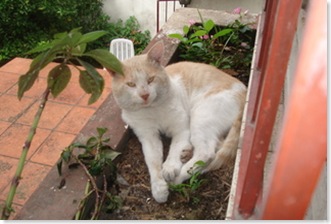Cats spend up to one-third of their waking hours self-grooming. The tiny barbs on a cat's tongue pull loose hair from its coat and those hairs are swallowed. Because hair is very difficult to digest, it compacts with undigested food in the intestines.
The accumulation becomes a source of irritation if it is not eliminated in the litter box or coughed up. The result is messy fur-like, cigar-shaped forms on the floor or furniture.
Although you may not see hairballs, there may be a significant accumulation in your cat’s intestines. Some hairballs surgically removed are almost three inches in diameter.
Signs of Hairball Problems:
- Cigar shaped clumps of fur found on floor or furniture
- Dry, hacking cough or vomiting after meals
- Preoccupation with eating plants or grass
- Hair entwined with the feces
- Dry, dull coat and/or excessive shedding
- Poor appetite and/or weight loss
- Constipation or diarrhea.
Conventional Treatments for hairballs include:
- Mineral oil or petroleum lubricants -- These are petrochemical products
- Large amounts of fiber -- This can decrease intestinal absorption of nutrients and may result in a malnourished animal
- Enemas for constipation -- This can require tranquilization and can be dangerous.
Alternative Treatments & Prevention for Hairballs:
Prevention plays a key role in keeping your cat healthy and free of hairballs. Regular brushing will help to remove the "dead" hairs and keep your kitty from swallowing them during their normal grooming routine. Even short-haired cats should be groomed.
Place a dab of a non-petroleum based jelly on your cats nose. When they lick it off, it will be swallowed and can help prevent hairball build-up.
A teaspoon of high-grade fish oil added to your pet's food once a week is a good lubricant to help fass any hairballs and will also help keeps its coat shiny.
A small spoonful of canned pumpkin or a teaspoon of pineapple or papaya juice can also help break-up hairballs
























0 comments:
Post a Comment